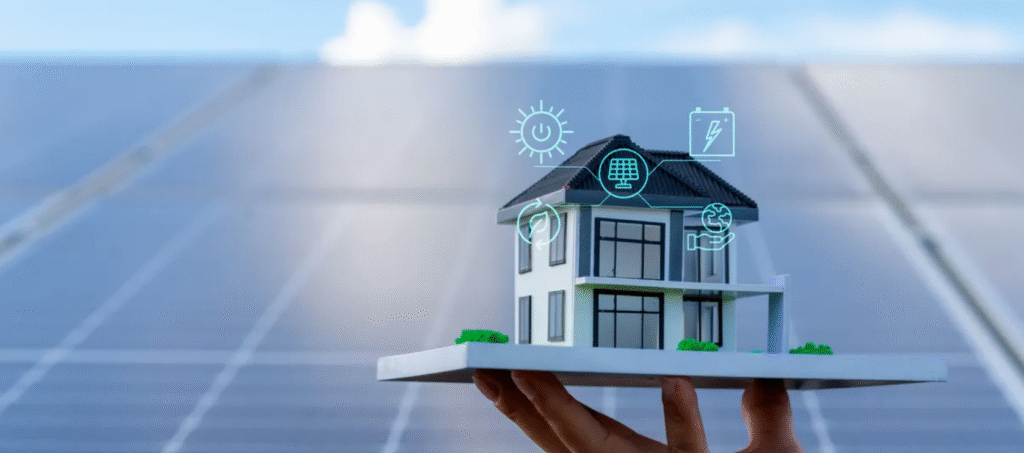Making smart upgrades to your home is one of the most effective ways to improve your quality of life, increase your property’s value, and reduce your environmental footprint. But not all renovations are created equal. Some improvements look good on the surface but offer little long-term benefit, while others deliver tangible returns—financially, functionally, and environmentally. Whether you’re aiming to cut utility costs, reduce your carbon footprint, or simply enjoy your living space more, here are some impactful home improvements that truly make a difference.
Energy Efficiency Upgrades
Energy efficiency should be a top priority for any homeowner considering renovations. Not only do these improvements save you money on monthly utility bills, but they also reduce your home’s overall energy consumption.
Windows and Insulation: One of the simplest ways to make a noticeable difference is by upgrading your windows and adding insulation. Double or triple-glazed windows help maintain indoor temperatures year-round, reducing the load on your HVAC system.
Smart Thermostats: A small yet powerful change, smart thermostats adapt to your routines and optimize heating and cooling to reduce waste. Over time, they can lead to significant energy savings while maintaining your comfort.
Solar Panel Installation
With the increasing affordability of solar technology and growing awareness of its benefits, more homeowners are turning to renewable energy solutions.
Solar energy reduces dependency on the grid, lowers utility bills, and increases home value. In sunny regions like Arizona, solar panels perform especially well. For those ready to make the switch, finding experienced solar installers Tucson residents trust is the first step toward cleaner, cheaper energy.
Professional installers can help assess your roof’s suitability, recommend the right system size, and handle permits and paperwork. Once installed, most systems require minimal maintenance and can last 25 years or more.
Water Conservation Features
Water conservation might not be top of mind for every homeowner, but it makes a significant difference in both cost savings and sustainability.
Low-Flow Fixtures: Swapping out traditional faucets, showerheads, and toilets for low-flow versions can cut water usage dramatically. These modern fixtures often perform just as well—if not better—than older designs while reducing your monthly water bill.
Rainwater Harvesting: Collecting rainwater for landscape irrigation is another smart, eco-conscious move. Systems can be as simple as a barrel under a downspout or as complex as a buried tank connected to an irrigation system.
Landscaping That Supports the Environment
Your outdoor space holds huge potential for meaningful improvement. Sustainable landscaping not only looks beautiful but also supports local ecosystems and reduces maintenance needs.
Native Plants: Choosing plants that are native to your region means they’ll require less water, fertilizer, and pesticides. They’re also more likely to thrive in your soil and climate, reducing the need for expensive upkeep.
Permeable Surfaces: Consider installing permeable pavers or gravel paths that allow rainwater to soak into the ground instead of running off into drains. This helps reduce erosion and replenishes groundwater supplies.
Improved Indoor Air Quality
The air inside your home can affect your health more than many people realize. Upgrades that enhance air quality contribute to a more comfortable and healthier environment, especially for those with allergies or asthma.
Ventilation Systems: Installing a whole-house ventilation system or upgrading your existing one helps remove stale indoor air and brings in fresh, filtered air. This is especially beneficial in newer, tightly sealed homes.
Low-VOC Materials: When repainting walls or replacing flooring, choose products with low volatile organic compounds (VOCs). These materials emit fewer pollutants, making your indoor air cleaner and safer.
Lighting That Works Smarter
Lighting has a huge impact on mood, energy use, and functionality. Thoughtful lighting improvements offer long-term benefits in several areas of the home.
LED Bulbs: Replacing incandescent bulbs with LED alternatives is one of the easiest ways to reduce energy use. LEDs last longer, consume less electricity, and are available in a variety of color temperatures.
Natural Light Enhancements: Adding skylights or solar tubes brings more daylight into your home, which can reduce the need for artificial lighting and improve mental well-being.
Kitchen and Bathroom Revamps with Purpose
Upgrading your kitchen or bathroom doesn’t just add style—it can also be done in a way that enhances sustainability and usability.
Energy-Efficient Appliances: Replacing old dishwashers, refrigerators, and washing machines with energy-efficient models can drastically cut electricity and water consumption. Look for Energy Star-rated appliances to ensure top performance with minimal waste.
Sustainable Materials: Choose countertops made from recycled glass or bamboo, cabinets made with reclaimed wood, and tiles produced with eco-conscious practices. These choices blend beauty with environmental responsibility.
Conclusion
Every home improvement project is an opportunity to make lasting, positive change—not just in your home, but in the world. From solar power to sustainable landscaping and energy-saving appliances, the right upgrades can boost comfort, cut costs, and reduce your environmental footprint. Whether you’re planning a full-scale renovation or a few strategic tweaks, focus on the changes that make a real difference—for you, your home, and the planet.



